Last updated on March 5, 2024
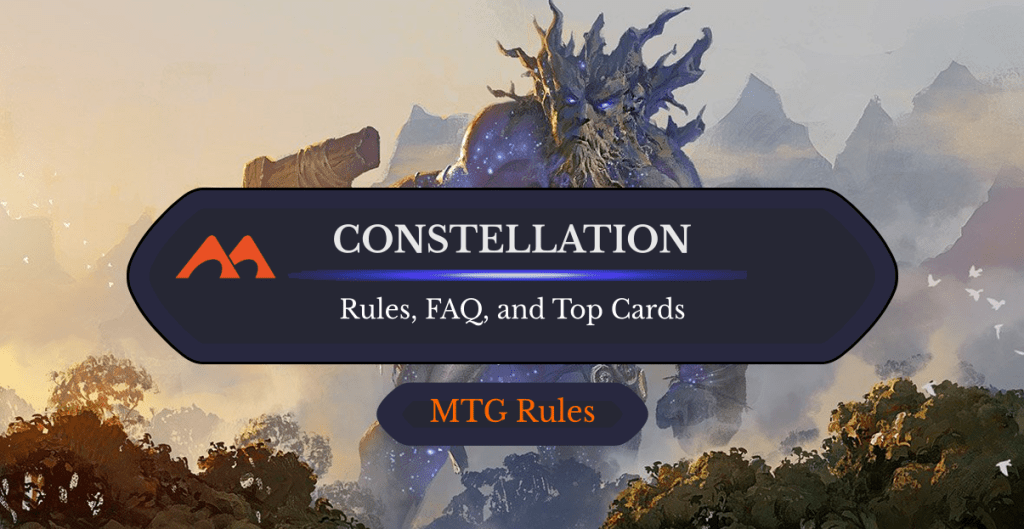
Nylea's Colossus | Illustration by Grzegorz Rutkowski
Few Magic settings are as enchanting as the Greek mythology-inspired plane of Theros. Watched over by fifteen fickle gods, the plane received some notable planeswalker visitors, including Ashiok and Elspeth Tirel. It’s also the home of several interesting, enchantment-themed mechanics.
One of the strongest mechanics is constellation, a simple ability that provides tons of value whenever enchantments enter the battlefield. It’s a great mechanic for anybody who loves enchantments and value, but how does it work, and what are the best cards?
Let’s get started!
How Does Constellation Work?

Setessan Champion | Illustration by Emrah Elmasli
Constellation is a triggered ability that primarily appears on creatures and enchantment creatures, although there are some enchantments with constellation. The ability is triggered when an enchantment enters the battlefield under the control of the player who controls the card with constellation.
Enchantments and enchantment creatures with constellation, like Strength from the Fallen or Eidolon of Blossoms, trigger their constellation ability themselves when they enter play. Non-enchantment creatures, like Triton Waverider, don’t trigger until an enchantment comes into play. Constellation always triggers when a card with the enchantment type comes into play, regardless of any other types it has.
The History of Constellation in MTG
The constellation mechanic debuted in 2014 with Journey into Nyx, the final set of the original Theros block. The mechanic is meant to represent the celestial bodies that represent the gods of Theros and show the bond between the divine and mortal realms of the Greek-inspired plane. It shows those who have obtained the blessings of the gods, making them stronger when enchantments, which are closely linked with the gods of the plane, come near them.

As a mechanic so heavily tied to Theros, it’s only been reprinted sparsely. The most recent set with new constellation cards is Commander Masters, with a few new cards printed in the Enduring Enchantments Commander Precon. The mechanic has been seen in other Commander products, like Commander 2015’s Daxos's Torment. The only other set to see constellation return as a major mechanic was Theros Beyond Death which returned to Theros as its primary setting. As a deeply flavorful and synergistic mechanic, it’s not an evergreen keyword like flying or trample.
Is Constellation Optional?
Constellation always puts an ability on the stack when an enchantment enters the battlefield under your control. Most constellation abilities are non-optional, although there are a few with a “may” clause that lets you decline to use the ability as it resolves.
Do Auras Without Targets Trigger Constellation?
There are two ways to get an aura without a target: when you flicker an aura that’s in play, and when an aura on the stack loses its target because the target dies.
In the first situation, if you flicker an aura with an effect like Flicker of Fate, it comes into play and must be attached to a legal permanent. For example, a Pacifism needs to be attached to a creature. It does this without targeting (which can be a sneaky way to get around hexproof or shroud), but the aura still enters the battlefield and triggers constellation.
When an aura is on the stack and its target leaves the battlefield or becomes illegal through other means, like instant-speed shroud or protection, the spell fizzles while it’s on the stack. Because it no longer has a legal target, it never comes into play and goes straight from the stack to the graveyard. Since it goes directly to the graveyard and never enters the battlefield, constellation abilities don’t trigger.
What if You Kill the Creature in Response to the Constellation Trigger?
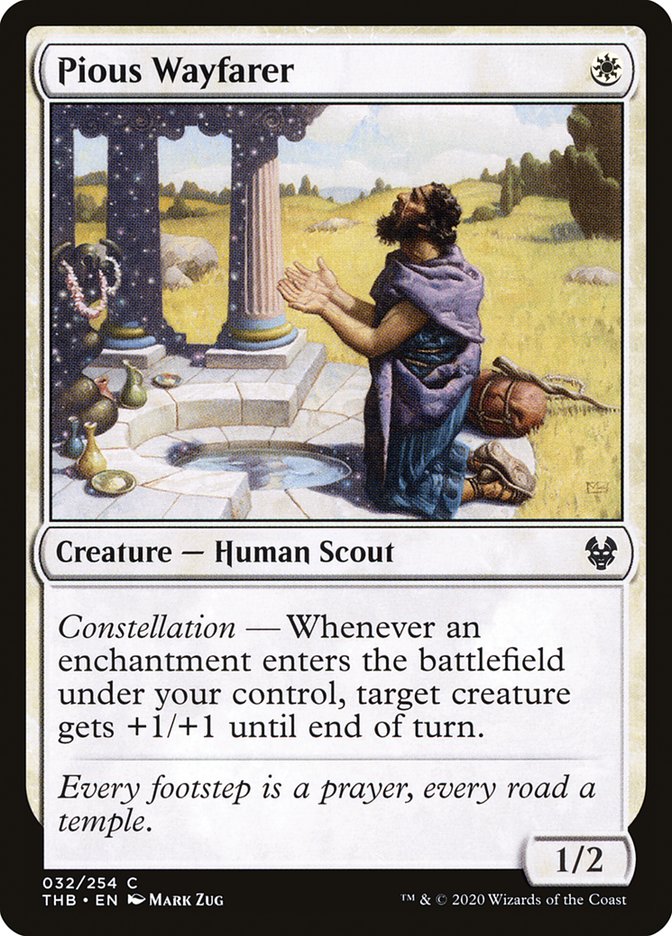
Once the constellation trigger is on the stack, it resolves regardless of whether the creature that created the trigger is still in play. The only exception would be if the creature created a constellation trigger that targeted itself; for example, if Pious Wayfarer targeted itself with +1/+1 and then died, the ability would fizzle because it no longer had a target. Targetless constellation triggers still resolve, even if you removed the enchantment or the creature in response.
What if You Kill the Creature in Response to the Enchantment?
If you kill the creature with constellation in response to the enchantment being cast, the creature won’t trigger. The creature with constellation needs to be on the battlefield at the same time the enchantment comes into play to “see” it enter. If the creature dies first and goes to the graveyard or any zone other than the battlefield, it won’t see the enchantment enter the battlefield, and it won’t trigger.
Gallery and List of Constellation Cards
- Agent of Erebos
- Archon of Sun's Grace
- Boon of the Spirit Realm
- Calix, Guided by Fate
- Captivating Unicorn
- Composer of Spring
- Daxos's Torment
- Doomwake Giant
- Dreadbringer Lampads
- Eidolon of Blossoms
- Eutropia the Twice-Favored
- Favored of Iroas
- Forgeborn Oreads
- Goldenhide Ox
- Grim Guardian
- Harvestguard Alseids
- Humbler of Mortals
- Nessian Wanderer
- Nexus Wardens
- Nylea's Colossus
- Oakheart Dryads
- Pious Wayfarer
- Protean Thaumaturge
- Sage of Mysteries
- Setessan Champion
- Setessan Skirmisher
- Shoal Kraken
- Skybind
- Strength from the Fallen
- Thassa's Devourer
- Thoughtrender Lamia
- Triton Waverider
- Underworld Coinsmith
- Whitewater Naiads
Best Constellation Cards

One of the most impactful constellation cards right now is Calix, Guided by Fate, doing the gods’ work in Standard. Along with the recent Standard bannings, this Aftermath card has helped breathe new life into the Selesnya enchantments deck, giving it a more consistent, explosive start while helping grind out the late game by making copies of Spirited Companion and Weaver of Harmony to overwhelm the opponent with card advantage and board presence.
In Commander, Eidolon of Blossoms and Setessan Champion are must-have constellation cards for any deck with a strong enchantment theme. These are two particularly powerful enchantresses; Eidolon is the only one that replaces itself, and the Champion doesn’t just draw cards but also becomes a serious threat if left unchecked. Since these both draw on ETB instead of on-cast like traditional enchantresses, you can also do all sorts of flicker tricks to maximize your card draw.
Two underrated constellation cards in EDH are Nylea's Colossus and Thoughtrender Lamia. The Colossus is a great way to win a game from nowhere, especially if you’re running a Voltron deck built around auras. The Lamia is a little expensive, but it’s a fantastic control tool. Enchantment decks tend to be good about generating a lot of extra mana, so it’s easy to get this out on turn 4 or 5 and Mind Twist your opponents every turn for the rest of the game.
Decklist: Anikthea, Hand of Erebos Constellation in EDH
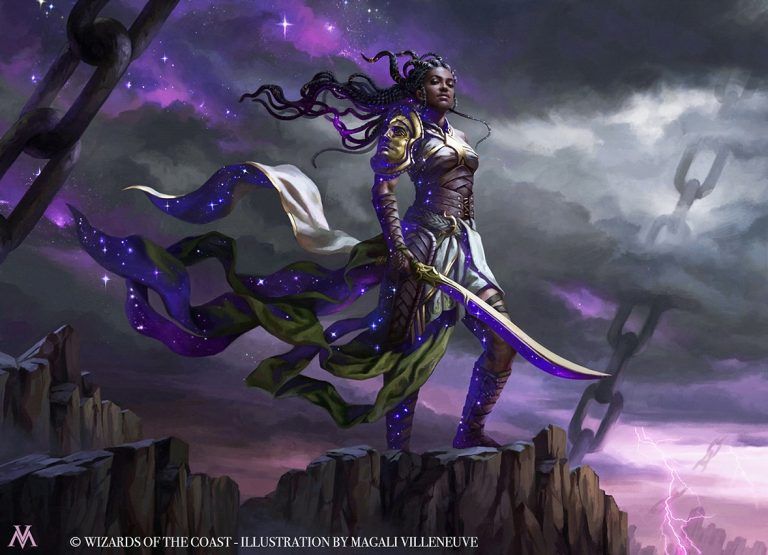
Anikthea, Hand of Erebos | Illustration by Magali Villeneuve
Commander (1)
Creatures (26)
Walking Ballista
Alseid of Life's Bounty
Avacyn's Pilgrim
Birds of Paradise
Elves of Deep Shadow
Argothian Enchantress
Collector Ouphe
Composer of Spring
Destiny Spinner
Jukai Naturalist
Nessian Wanderer
Sanctum Weaver
Shigeki, Jukai Visionary
Sythis, Harvest's Hand
Weaver of Harmony
Calix, Guided by Fate
Heliod, Sun-Crowned
Nyx Weaver
Setessan Champion
Eidolon of Blossoms
Doomwake Giant
Gravebreaker Lamia
Demon of Fate's Design
Thoughtrender Lamia
Nylea's Colossus
Nyxborn Behemoth
Instants (12)
Enlightened Tutor
Entomb
Malakir Rebirth
March of Otherworldly Light
Path to Exile
Swords to Plowshares
Tamiyo's Safekeeping
Despark
Druid's Deliverance
Heroic Intervention
Teferi's Protection
Clever Concealment
Sorceries (5)
Commune with the Gods
Agadeem's Awakening
Kruphix's Insight
Toxic Deluge
Extinguish All Hope
Enchantments (22)
Authority of the Consuls
On Thin Ice
Swift Reconfiguration
Utopia Sprawl
Wild Growth
Blind Obedience
Fertile Ground
Greater Auramancy
Seal of Cleansing
Seal of Primordium
Sterling Grove
Sylvan Library
Cemetery Tampering
Enchantress's Presence
Grasp of Fate
Seal of Doom
Tymaret Calls the Dead
Anointed Procession
Defense of the Heart
Hallowed Haunting
Elspeth Conquers Death
Sphere of Safety
Artifacts (1)
Lands (33)
Bayou
Boseiju, Who Endures
Bountiful Promenade
Brushland
Caves of Koilos
Command Tower
Deathcap Glade
Godless Shrine
Hall of Heliod's Generosity
Indatha Triome
Llanowar Wastes
Marsh Flats
Overgrown Farmland
Overgrown Tomb
Prismatic Vista
Savannah
Scrubland
Shattered Sanctum
Snow-Covered Forest x5
Snow-Covered Plains
Snow-Covered Swamp
Takenuma, Abandoned Mire
Temple Garden
Undergrowth Stadium
Urborg, Tomb of Yawgmoth
Vault of Champions
Verdant Catacombs
Windswept Heath
Yavimaya, Cradle of Growth
While Anikthea, Hand of Erebos doesn’t have constellation itself, it’s a fantastic commander to helm a deck built around the mechanic. To start, it’s an enchantment itself, and even more importantly, it’s in Abzan colors (). While blue and red have some powerful enchantments, Abzan is the perfect home for enchantress decks in general, but it also gives you access to all the best constellation cards. Coupled with Anikthea’s powerful “reanimation” ability, this deck does a great job getting multiple constellation triggers a turn.
Likely our best constellation cards are the enchantresses, Eidolon of Blossoms, and Setessan Champion. There are classics in the deck, like Sythis, Harvest's Hand, Argothian Enchantress, and Enchantress's Presence, but the Eidolon and Champion are the only ones that trigger off enchantments entering play instead of being cast. This lets Anikthea draw two cards when it comes into play, provided it has an enchantment to put into play, and draw an additional card each time it attacks.
A deck with this much card draw needs plenty of mana, so Nessian Wanderer and Composer of Spring pull a lot of weight. Wanderer usually draws you to land when an enchantment enters the battlefield, and the Composer puts them right into play. The Composer is especially strong with the classic enchantresses, as you’ll draw the card on-cast to find a land to put into play off its ETB. Make sure to stack your triggers so that Composer’s trigger resolves after any card draw triggers to increase the odds of getting a free Explore.
Constellation effects also help this deck control the board. Doomwake Giant makes it impossible for your opponent to keep tokens or small-value creatures in play, but you get enough constellation triggers that this can become a full board wipe. Thoughtrender Lamia ignores the board and goes straight for the hand. It’s impossible to keep a full hand with this in play. It’s especially effective against decks trying to hold combo pieces or interaction in their hand. Even if this dies, it’s often a four-for-one, forcing each opponent to discard a card on top of somebody using removal on it.
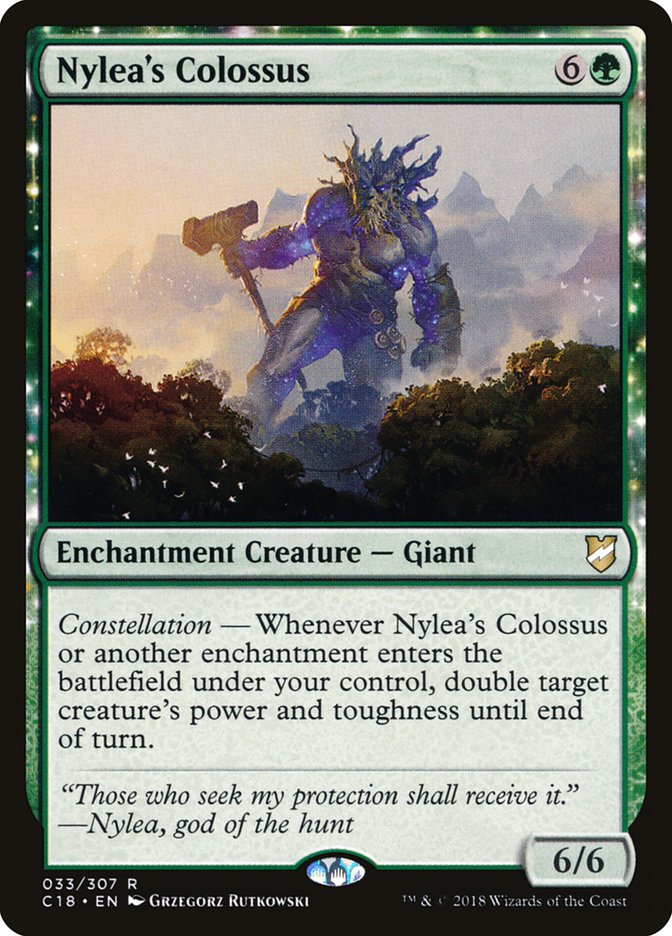
Nylea's Colossus provides you with a constellation card that’s capable of ending the game. This creature is a one-card Voltron engine; it only takes three constellation triggers to give Anikthea 32 power, one of which is achieved with it attacking, so you can take an opponent out from nowhere or just turn all your 3/3 menace creatures into far more formidable 6/6 menace creatures.
Anikthea makes an amazing constellation trigger because of how reliably it triggers it. This deck draws tons of cards so it’s always casting spells, but getting to put enchantments into play just for attacking does so much to get multiple constellation triggers reliably. In turn, these constellation triggers give the deck incredible value on top of the board presence Anikthea creates just by existing.
Wrap Up
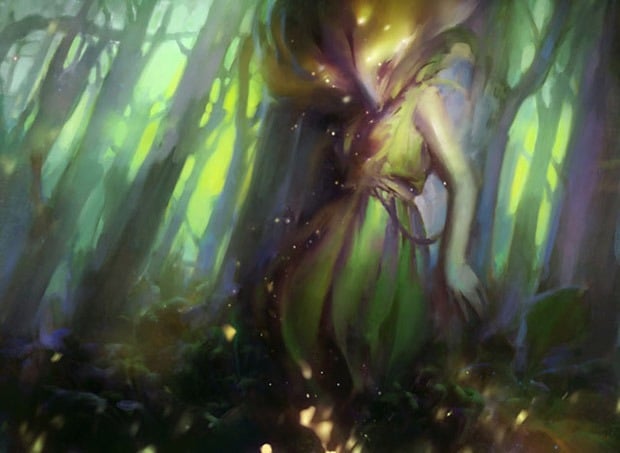
Eidolon of Blossoms | Illustration by Min Yum
Constellation is one of my personal favorite mechanics, as a player who loves both value and enchantments. It’s flavorful and fun, and a mechanic I hope we get to see more of going forward. It offers interesting design space, especially since it’s harder to abuse than similar effects like landfall.
A resurgence in constellation could even signal a new enchantment-themed plane. Imagine how interesting it would be to find a Theros god traveling through the Omenpaths. What’s your favorite mechanic from Theros block? Do you want to see more constellation in the future? Let me know in the comments or on the Draftsim Discord!
Stay healthy, and look to the stars!
Follow Draftsim for awesome articles and set updates:


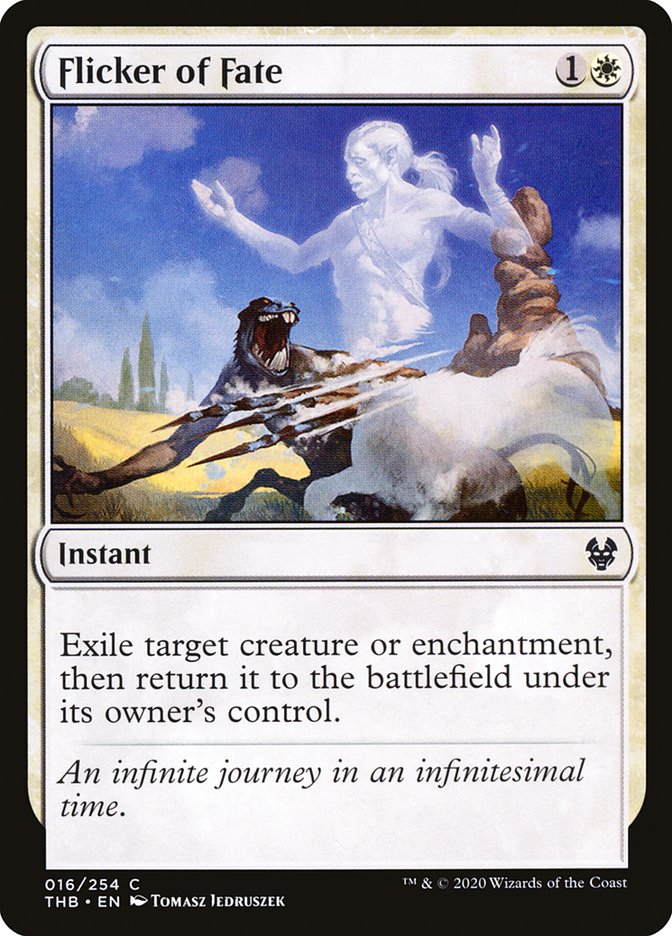
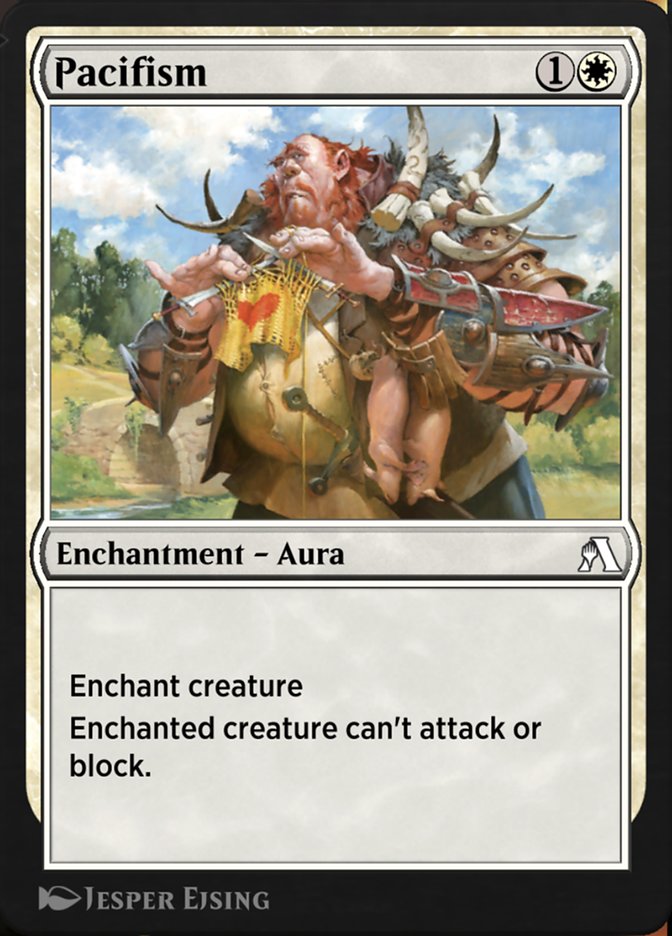
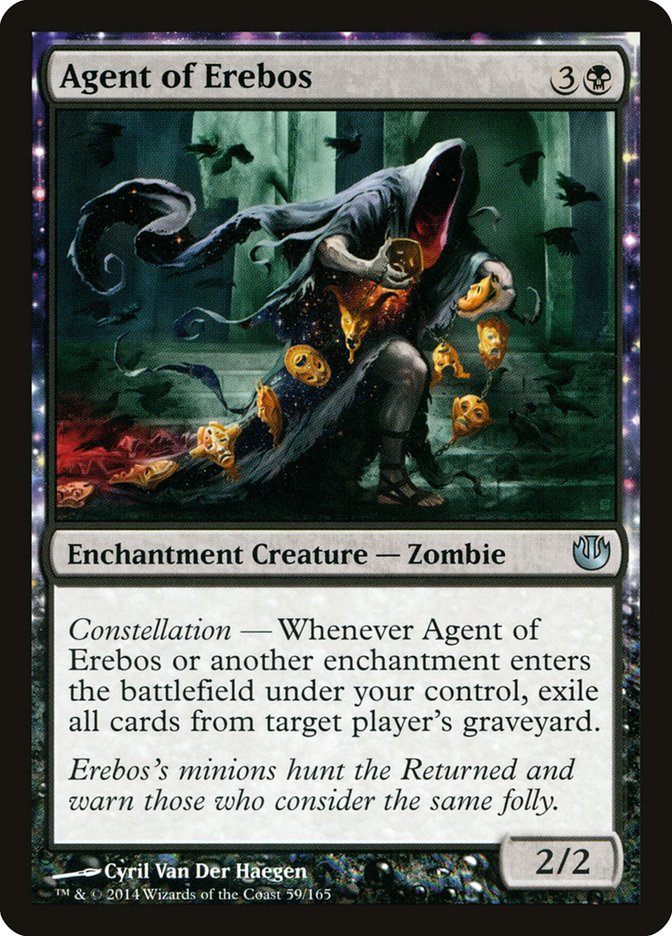
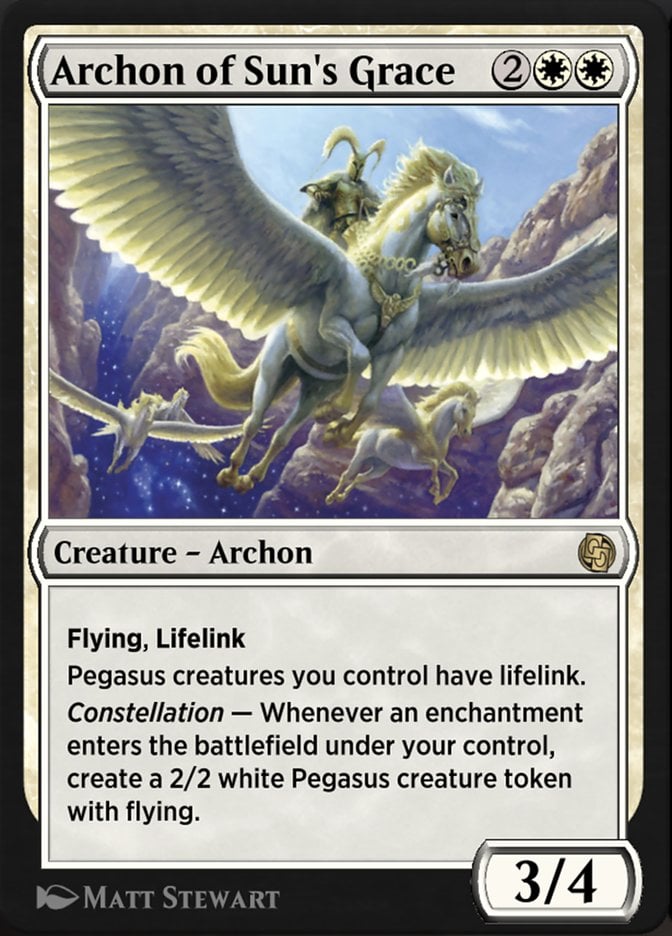

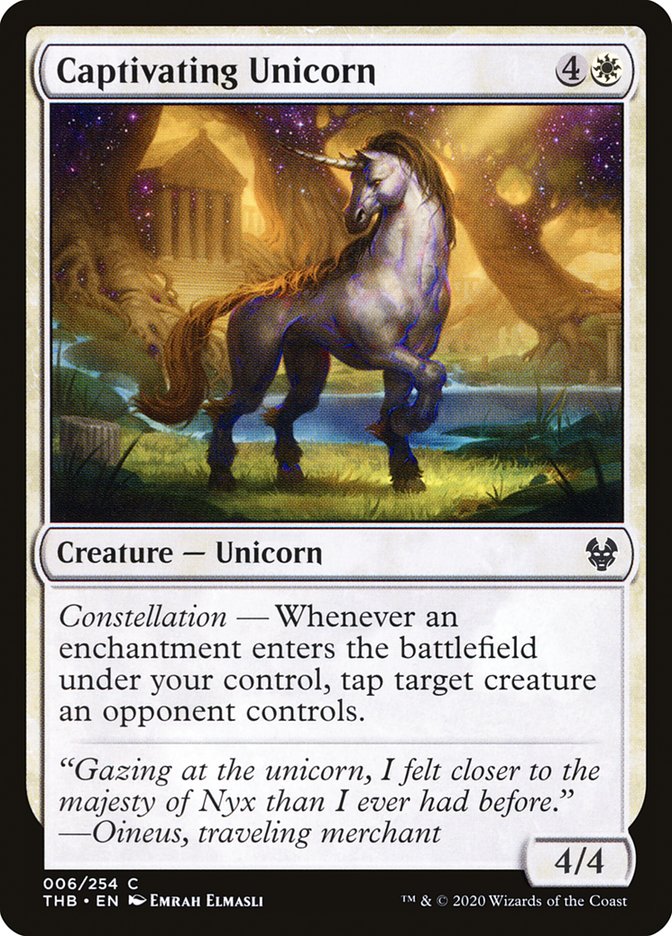
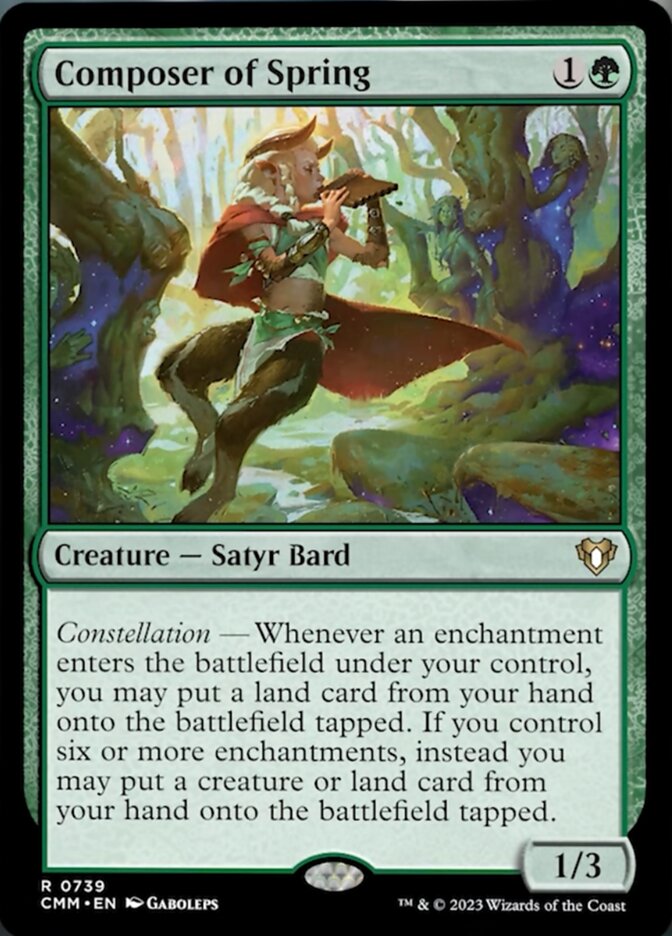

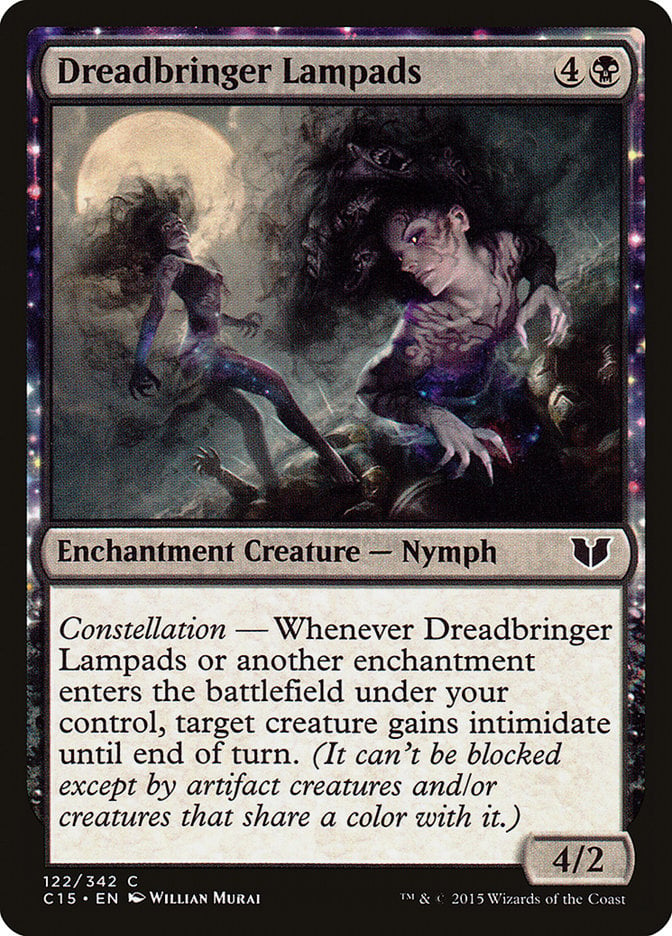


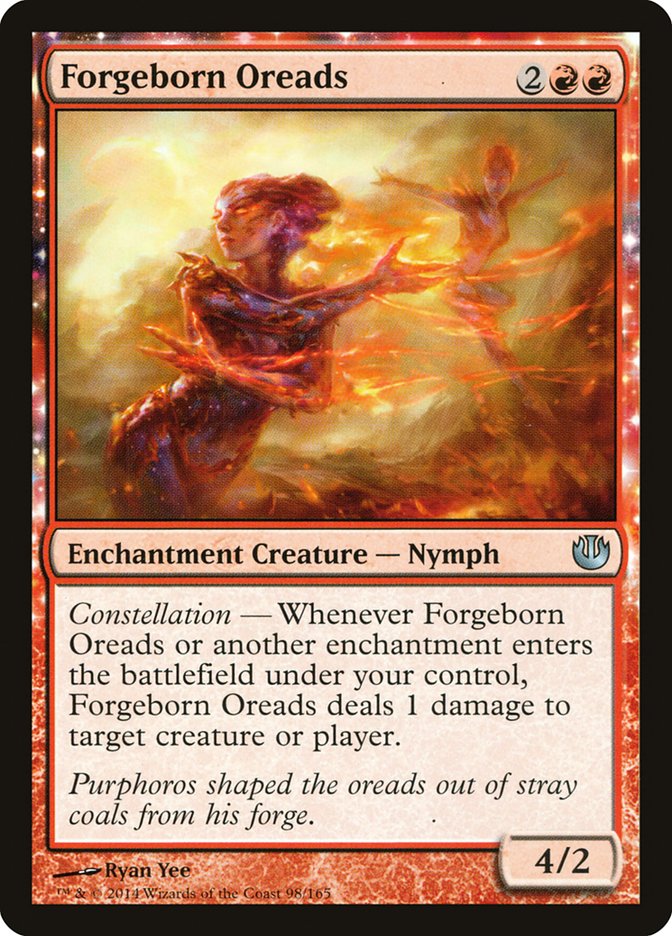
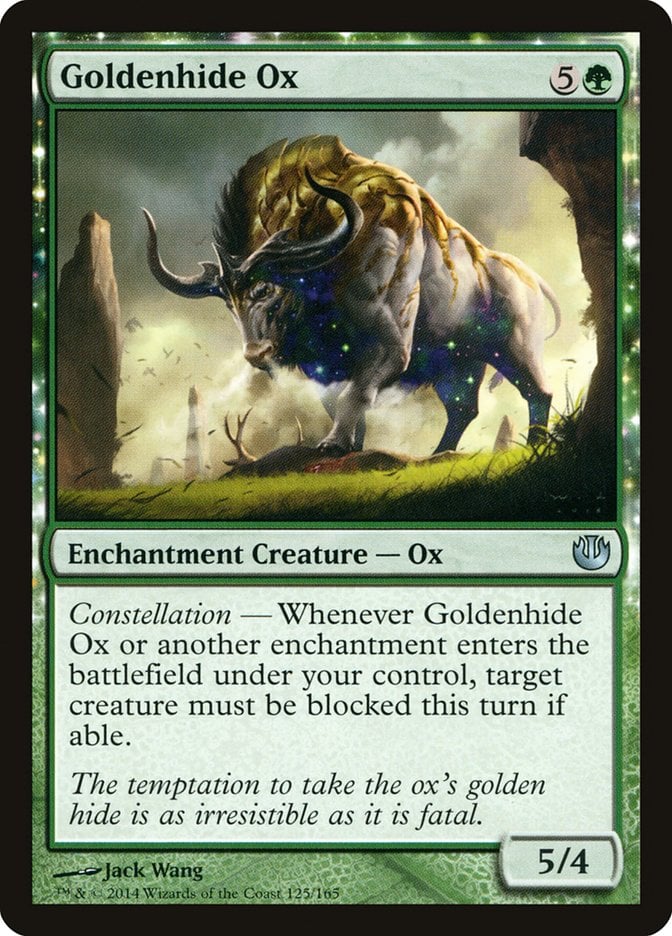


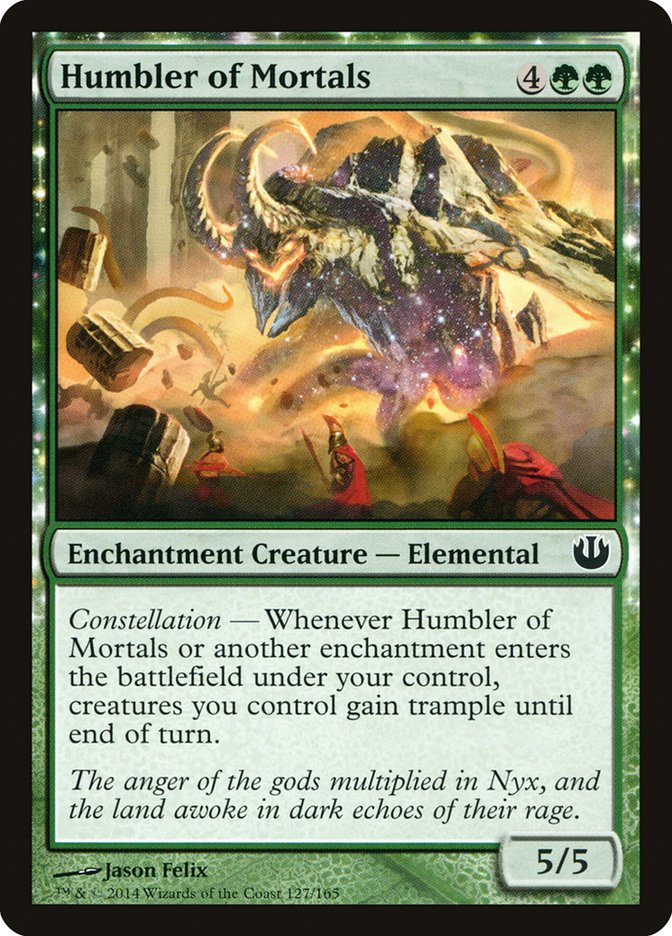

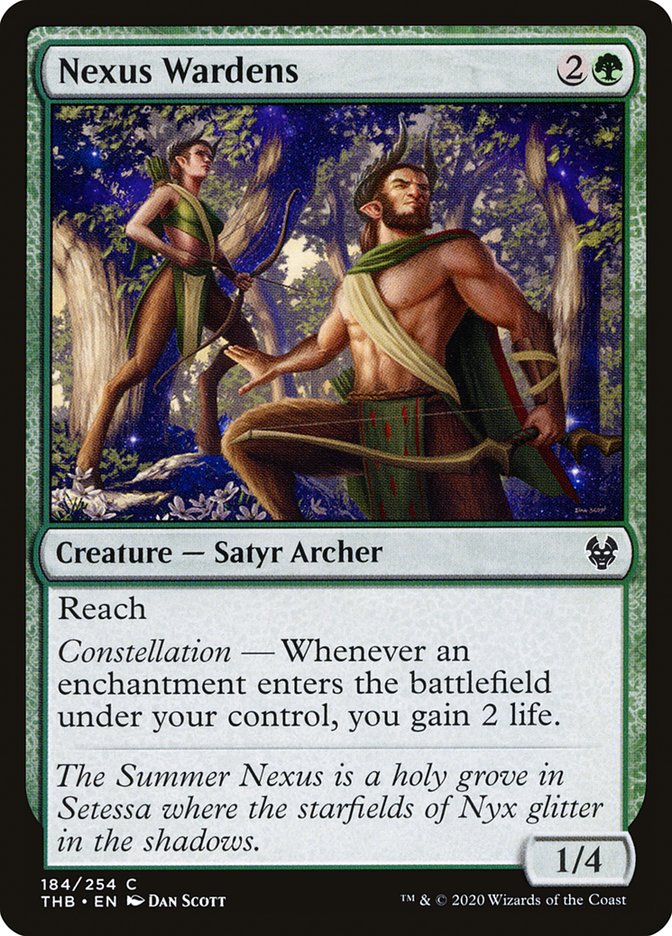
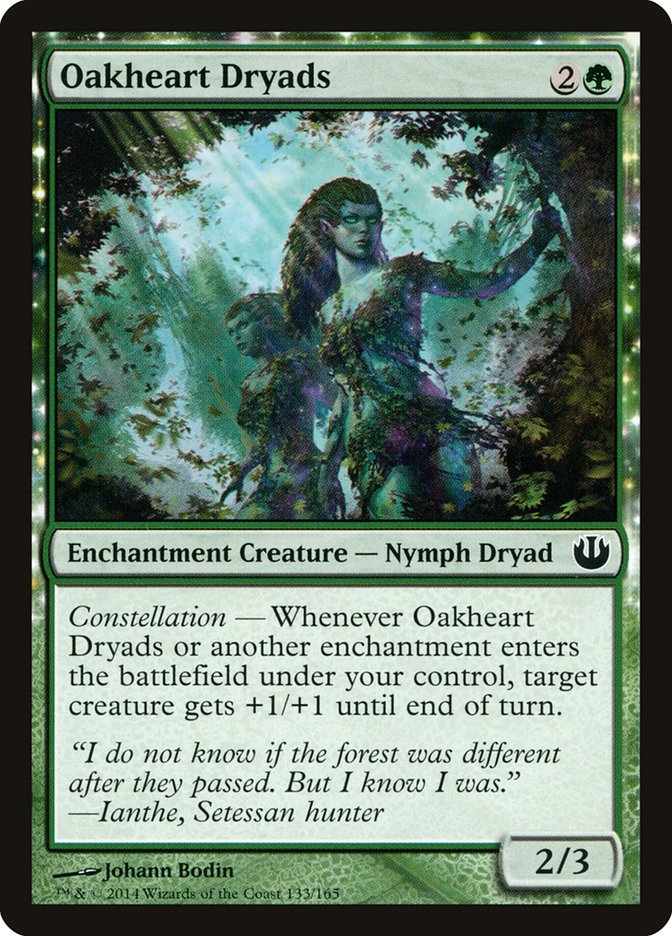
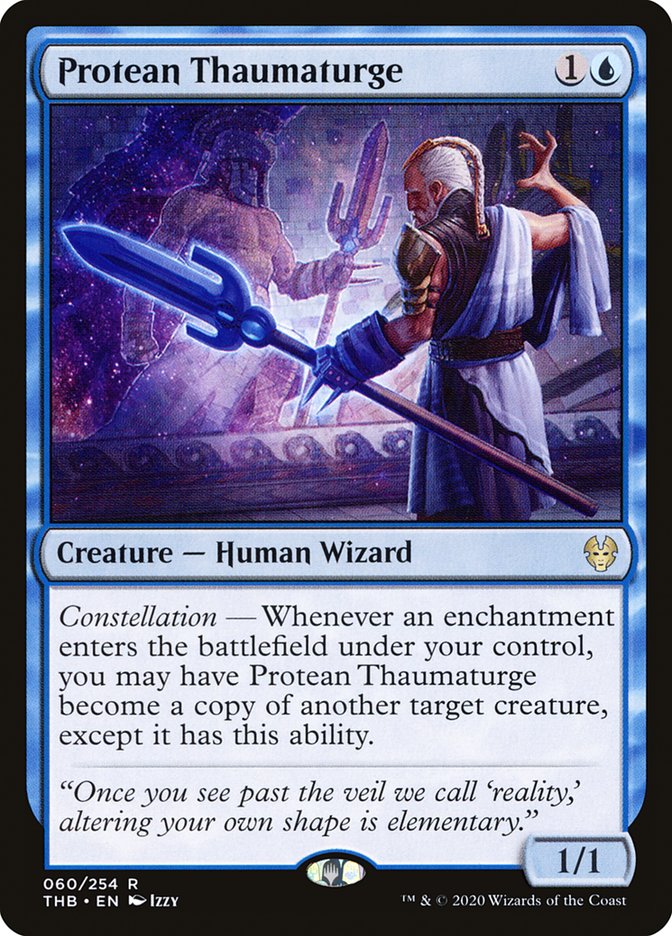
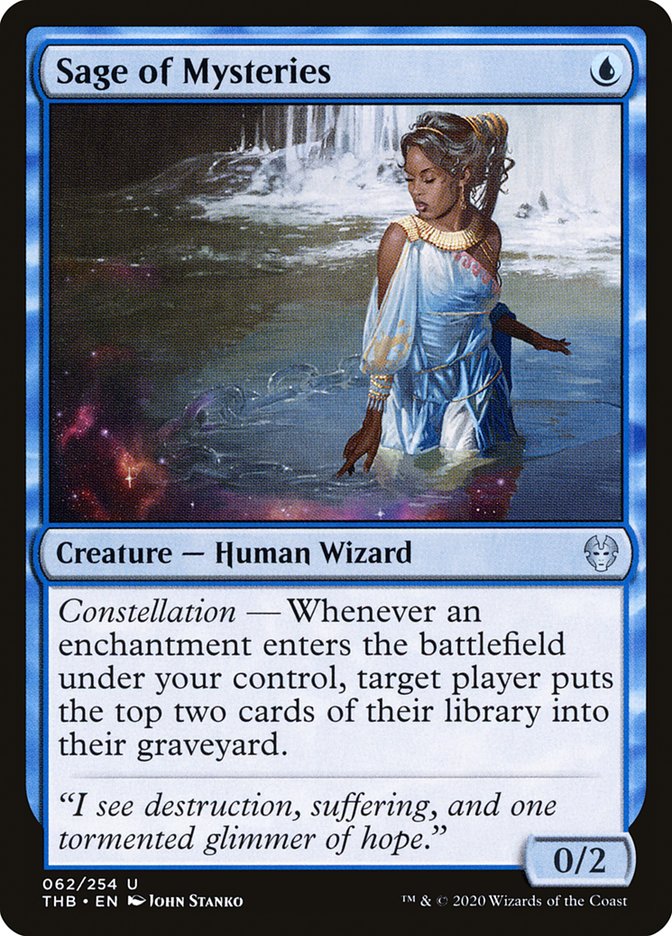


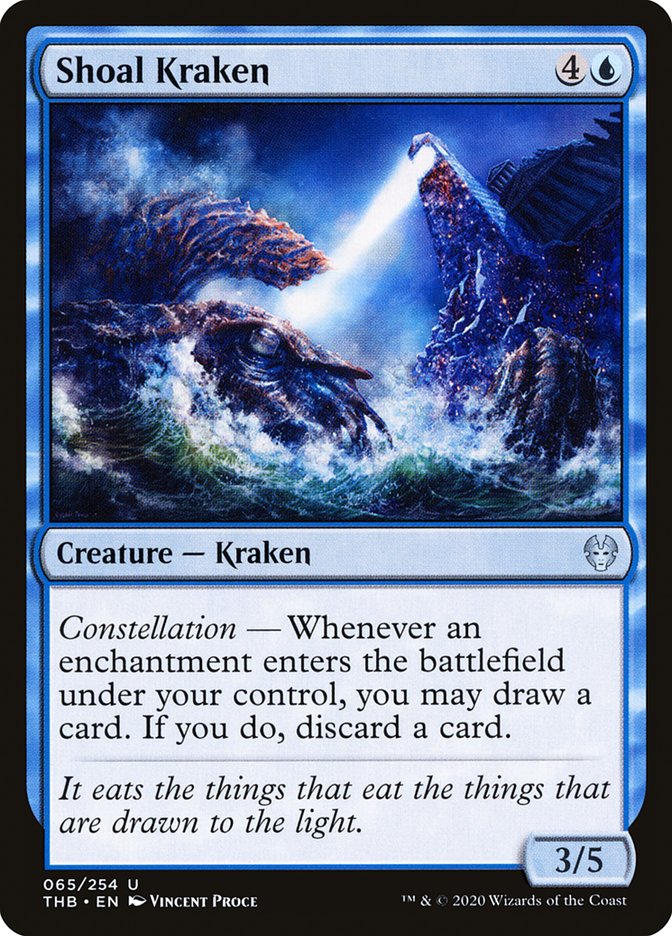
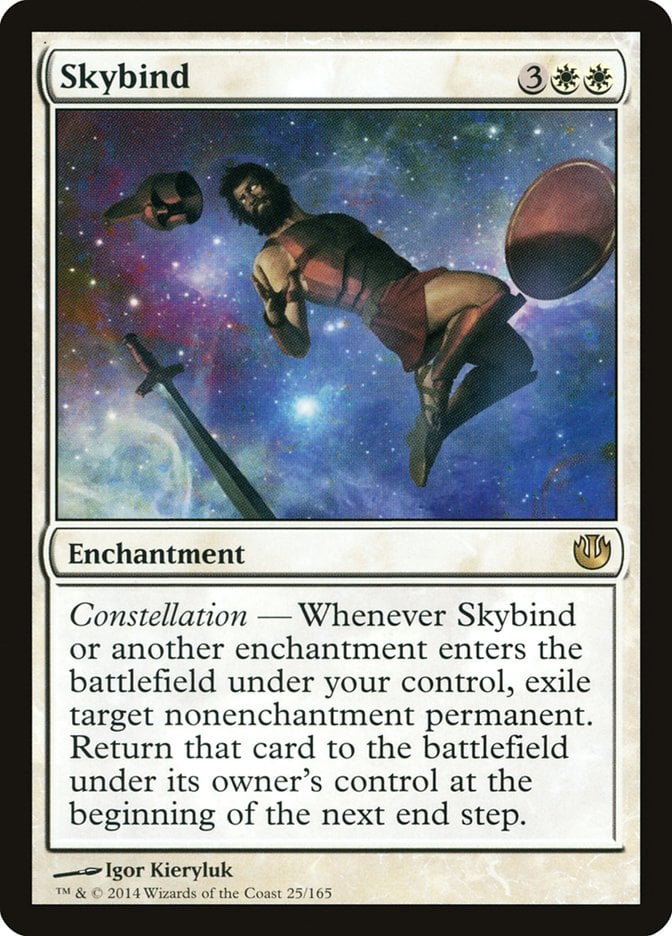


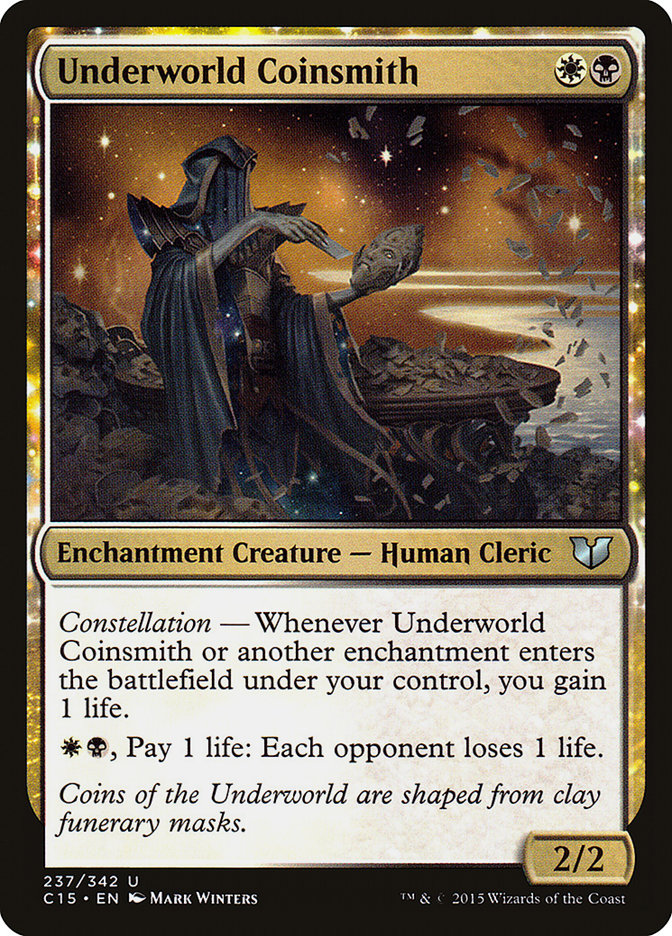
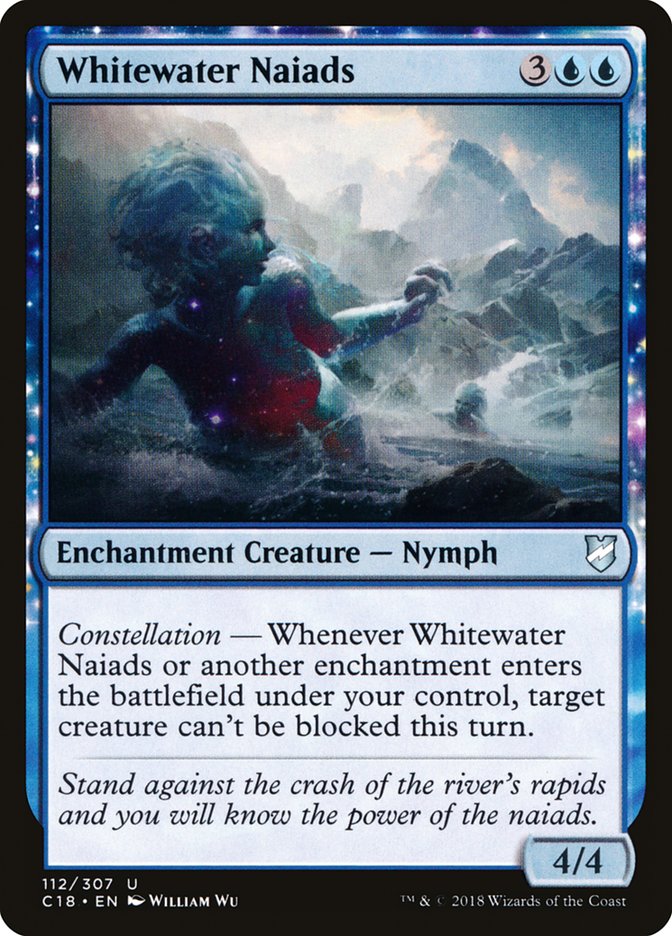

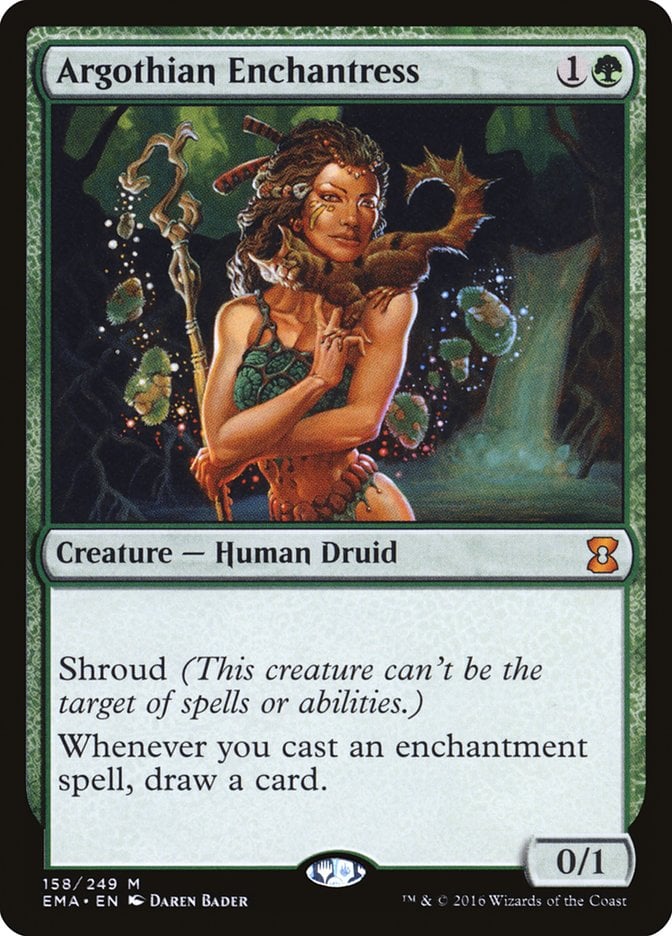
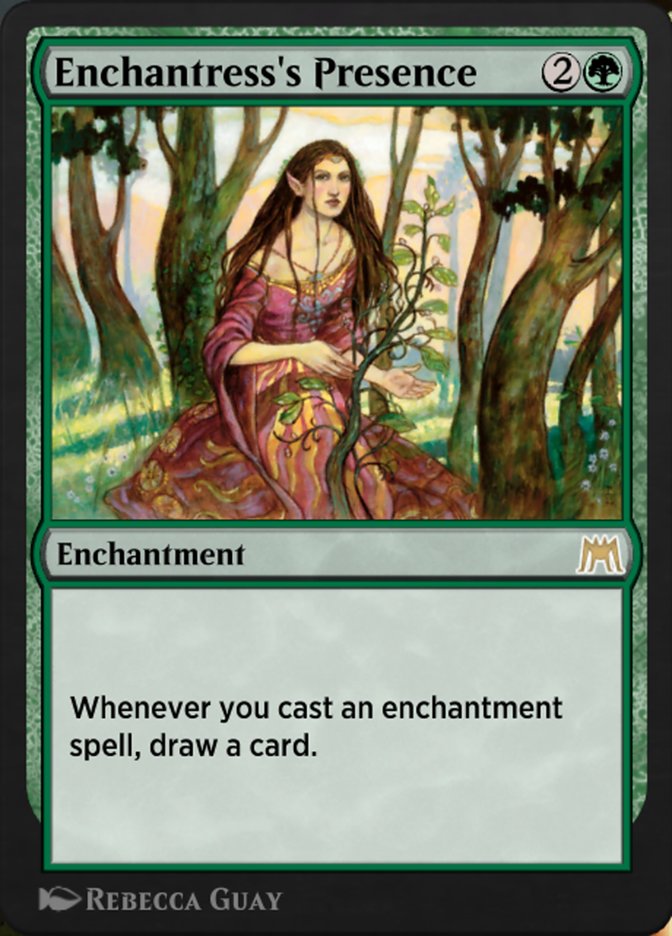
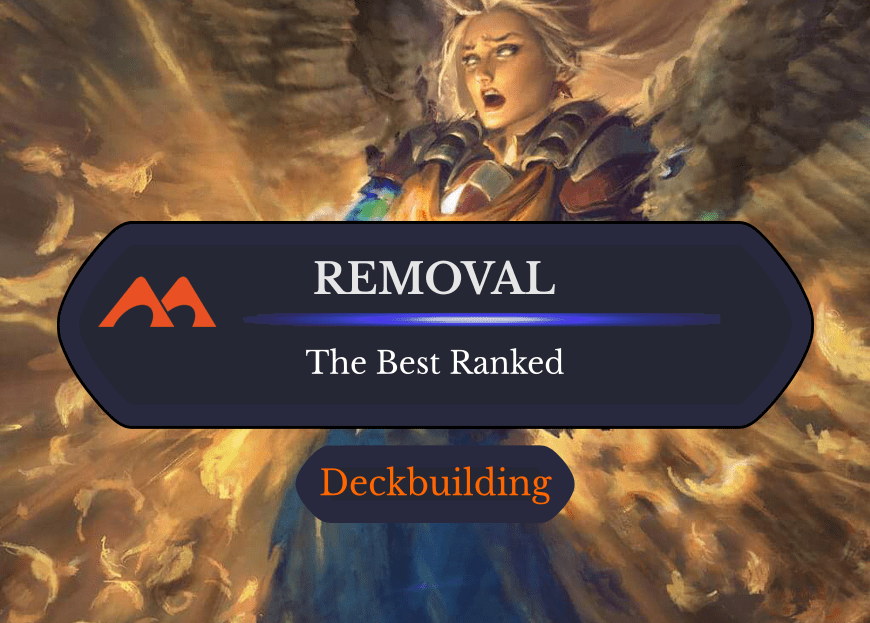
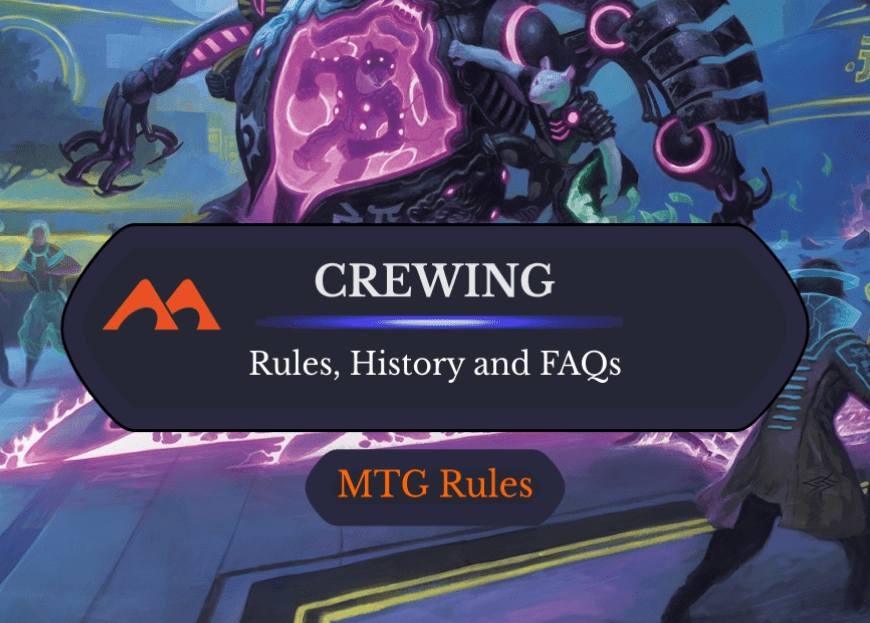
Add Comment